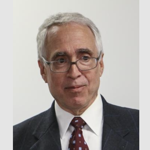Getting it Right
Virtually everything about the Transportation Security Agency (TSA) must be built from scratch. The "to do" list for John Magaw, the new TSA chief and Transportation Department undersecretary for security, is staggering. He has to build a headquarters hierarchy, appoint a federal security manager at each of the nation's 423 commercial airports, approve and implement a new hiring process for 28,000 federal screeners and even approve employee uniforms.
The TSA must have its screeners in place by Nov. 19, which means that one out of every 10 federal employees hired this year will be a screener.
Daunting though the task may seem, the federal government can meet TSA deadlines if it abandons business as usual and adopts three principles for building the new agency.
2. Focus on performance at every turn. The airport security law requires the undersecretary to establish a result-based management system that sets measurable goals and milestones. It also requires the Transportation Secretary to strike an annual performance agreement that sets performance goals for the undersecretary. Magaw should drive similar performance-based contracts down to the very bottom of the agency. The TSA should build a performance system that rewards screeners for their work, not longevity. Every employee should be charged with improving airport security at every checkpoint. By measuring performance by concourse, shift and even by team, on a daily basis, the undersecretary would be able to spot problem airports quickly, which should reduce the chances that terrorists could exploit weaknesses at any one point in the system. With this performance management system in place, the TSA could create internal competition for tighter airport security. To the extent an airport is consistently lagging in its security performance, the undersecretary could implement a new opt-out clause that would allow airports to contract out all or part of their security to private firms. Or he could allow a high-performing airport team in, say, New York, to take over responsibilities at a poorly performing airport elsewhere.
3. Prepare for quasi-governmental status. Once it is up and running, the TSA will be a prime candidate for conversion to quasi-governmental status. With its own source of revenue from fees charged to passengers and air carriers, the TSA easily could be cleaved out of government and re-codified as a government-sponsored enterprise such as COMSAT, Fannie Mae or Amtrak. Even if the federal government continued to provide limited subsidies for this new Transportation Security Corporation, its governing board would have the authority to raise ticket surcharges. That would insulate the agency from the cost pressure that did so much to undermine the performance of baggage screening contractors. The corporation could either be kept on the fringe of government or be fully privatized. Whatever TSA's final form, preparing for conversion now would help the agency discipline itself to fend off the red tape that grows like kudzu around most federal agencies. TSA must decide whether it will become a traditional government organization, a private corporation, or something in between. The agency certainly ought not model itself on a cost-shaving private contractor or an over-layered federal agency.
Paul C. Light is vice president and director of governmental studies at the Brookings Institution.
NEXT STORY: The Incredible Shrinking Budget Office







